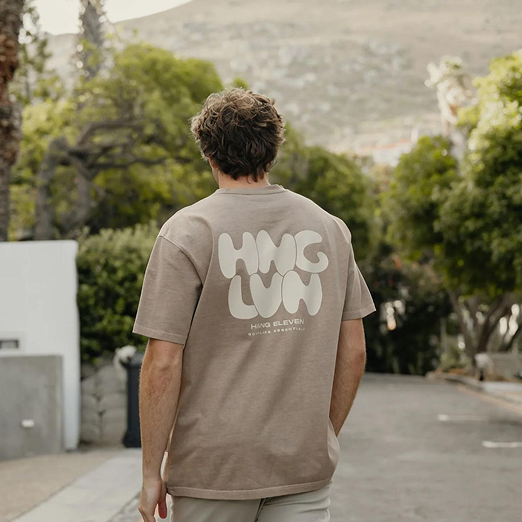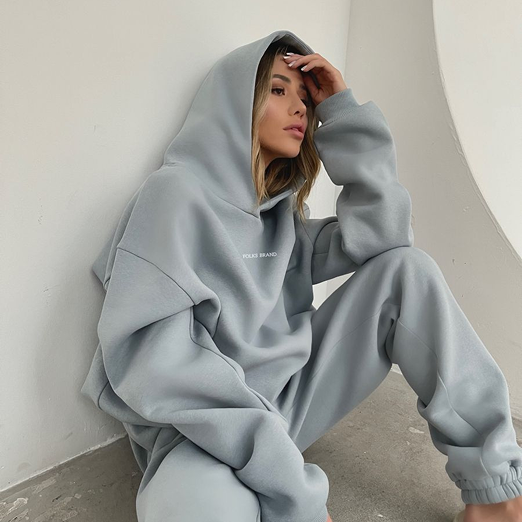For decades, power dressing meant shoulder pads, blazers, and polished leather shoes.
But today, the uniform of the powerful is not the suit — it’s the hoodie.
Once a symbol of rebellion and street anonymity, the hoodie has become a global icon of effortless influence.
From tech billionaires to runway models, from athletes to artists, the hoodie has redefined what power looks and feels like.
This is the story of how comfort became confidence, and how a simple pullover evolved into the most subversive luxury garment of the 21st century.
1. The Humble Beginning
The hoodie started as workwear.
In the 1930s, Champion designed it for warehouse workers and athletes who needed warmth and mobility.
It was practical, not poetic — built for function, not fashion.
But like all cultural revolutions, meaning began to layer.
By the 1970s, it moved from factory floors to the streets of New York, where breakdancers, skaters, and graffiti artists adopted it as armor.
The hoodie hid identity — a way to blend in and disappear — yet paradoxically, it became a symbol of individuality.
It was the uniform of the unheard.
2. From Street to Symbol
The hoodie’s cultural weight grew through hip-hop.
Artists like Run D.M.C., LL Cool J, and Tupac wore them unapologetically — turning what society dismissed as “streetwear” into status symbols.
Each hood pulled up was a statement: I’m not playing by your rules.
By the 1990s, skate culture, underground fashion, and sportswear all converged, and the hoodie became universal — democratic, defiant, and deeply personal.
It was comfort with attitude.
And while fashion houses looked the other way, subcultures were quietly rewriting the language of style.
3. The Shift: Comfort as Cool
The early 2000s marked a cultural flip.
Streetwear started bleeding into mainstream fashion, and luxury brands began to realize something powerful: comfort sells.
As social hierarchies flattened and digital life took over, the need for realness replaced the obsession with polish.
Enter the hoodie — soft, adaptable, and disarmingly human.
People no longer wanted to dress to impress; they wanted to dress to express.
Confidence was no longer measured by stiffness, but by ease.
In that shift, the hoodie became the new suit.
4. Silicon Valley’s Quiet Power Play
When Mark Zuckerberg started wearing grey hoodies to investor meetings, the world didn’t know what to make of it.
It seemed careless — almost disrespectful.
But it was strategic.
The hoodie in tech culture became a statement of modern dominance:
I’m so powerful, I don’t need to dress like you.
It was anti-establishment chic.
The casual uniform of billionaires who rejected the old codes of authority.
This aesthetic — minimalist, neutral, and relaxed — became the global dress code of innovation.
Suddenly, comfort wasn’t laziness.
It was intelligence.
It was focus.
It was control.
5. The Runway Renaissance
Then came Vetements, Off-White, and Balenciaga — designers who took the hoodie from street corners to couture catwalks.
They inflated it, deconstructed it, and recontextualized it.
The hoodie became sculptural. Architectural. Luxurious.
Cashmere instead of cotton. Oversized instead of fitted.
Logos replaced with irony, slogans replaced with silence.
When Demna Gvasalia sent an oversized hoodie down the runway under a structured coat, it wasn’t streetwear anymore — it was high art.
The hoodie had arrived.
6. The Politics of the Hood
Yet, the hoodie’s journey is not just about style — it’s about symbolism.
For many, especially Black youth in America, the hoodie has been a site of both identity and danger.
After the 2012 tragedy of Trayvon Martin, the hoodie became a symbol of racial injustice — a garment that carried grief, resistance, and visibility.
Protesters marched in hoodies not for fashion, but for solidarity.
To reclaim a piece of clothing weaponized by prejudice.
That duality — comfort and conflict — gives the hoodie its emotional charge.
It’s not neutral; it’s layered with meaning.
And that’s what makes it powerful.
7. The Hoodie as Psychological Armor
Clothing affects behavior.
When we wear something comfortable, our posture, pace, and tone shift.
We move differently, think differently, feel differently.
The hoodie, with its soft structure and cocooning hood, creates a sense of safety — a modern-day blanket for the overstimulated mind.
It’s not just a garment; it’s armor for anxiety, a shield against the noise.
In an age where mental health, rest, and authenticity are prized, the hoodie has become a wearable sanctuary.
8. The Rise of the Everyday Luxury Hoodie
Once upon a time, luxury meant discomfort — structured tailoring, restrictive fits, stiff fabrics.
Now, luxury means freedom.
High-end hoodies — made from heavyweight French terry, organic cotton, or brushed cashmere — embody that freedom.
Brands like Fear of God, Trendytroop, Aime Leon Dore, and John Elliott craft hoodies with obsessive attention to detail.
From drop shoulders to double-lined hoods, every stitch is deliberate.
This is slow fashion in disguise — an elevation of the everyday.
It’s not about showing off; it’s about feeling grounded.
9. The Aesthetic of Authenticity
In today’s visual culture, authenticity is the new aspiration.
A perfectly styled outfit looks try-hard. A slightly wrinkled hoodie looks real.
That’s why even luxury campaigns feature models lounging in oversized sweatshirts, coffee in hand, eyes half awake.
Because real is aspirational.
The hoodie, once dismissed as “lazywear,” is now the visual language of modern authenticity.
It represents effortlessness, not carelessness.
Ease, not apathy.
In fashion’s endless chase for truth, the hoodie stands still — and wins.
10. The Genderless Icon
Unlike most garments, the hoodie doesn’t belong to one gender.
It’s inherently neutral — a soft rebellion against binary fashion.
Men, women, nonbinary individuals all claim it, wear it, and reinterpret it.
It drapes differently on every body, yet belongs to everyone.
That universality has made it the foundation of modern unisex style — the quiet hero of inclusivity.
11. Streetwear, Community, and Identity
Streetwear began as a conversation among outsiders — and the hoodie was its microphone.
It signaled belonging.
It was how skaters recognized each other, how rappers represented neighborhoods, how fans wore loyalty.
That energy still fuels today’s fashion.
Every collaboration — from Nike x Travis Scott to Trendytroop x Local Artists — is built on that original spirit of community.
To wear a hoodie is to wear a story — not just of a brand, but of a collective.
12. The Digital Aesthetic
The hoodie’s rise also coincides with the digital shift.
On screens, it reads perfectly: minimalist, flattering, and familiar.
It’s the unofficial uniform of creators, coders, and content makers.
You can work, stream, perform, and protest in the same hoodie.
It transcends space — home, studio, street, office — seamlessly.
That’s why it became the visual shorthand for the modern lifestyle:
productive, fluid, self-defined.
13. Sustainability and the Soft Revolution
In fashion’s sustainability movement, the hoodie stands at the intersection of longevity and versatility.
It’s a piece you don’t discard — you live in it.
And when made well, it lasts years, even decades.
Brands are now investing in eco-conscious fabrics: organic cotton, bamboo fleece, recycled polyester, and natural dyes.
The hoodie isn’t just a product anymore — it’s a philosophy.
It embodies the slow-fashion ideal: buy less, wear longer, feel more.
14. The Hoodie in the Workplace
The pandemic erased old dress codes.
When executives began logging into Zoom calls in sweatshirts, the corporate power dynamic shifted.
Today, “business casual” has evolved into “business comfortable.”
Hoodies under blazers. Joggers with loafers.
It’s not sloppiness — it’s the evolution of modern professionalism.
Authority now wears softness.
And the hoodie, once banned in boardrooms, is now being tailored for them.
15. The Emotional Luxury
At its core, fashion has always sold emotion.
And the hoodie’s emotion is safety — the luxury of feeling like yourself.
Luxury used to mean aspiration; now it means comfort in authenticity.
The hoodie embodies that better than anything else.
It’s quiet luxury before the term existed.
No monogram needed — just texture, fit, and story.
When you pull it on, you’re not impressing anyone.
You’re centering yourself.
16. The Future of the Hoodie
The next generation of hoodies won’t just be softer — they’ll be smarter.
Biodegradable materials. Temperature-responsive weaves. Tech-integrated pockets.
Fashion is merging with innovation, but comfort will remain the heart.
Because no matter how futuristic the design becomes, the hoodie’s power lies in its humanity.
It’s not about showing status; it’s about showing soul.
17. The Hoodie as Philosophy
The hoodie is more than a garment — it’s a modern mindset.
It represents adaptability, resilience, comfort in chaos.
It tells the world: I move through spaces on my own terms.
That’s the real revolution.
In the hoodie, we don’t just find warmth — we find identity, protection, power.
It’s fashion stripped of pretense, status, or gender — just emotion in motion.
18. Final Reflection: Power in Softness
In the end, the hoodie rewrote the rulebook.
It proved that power doesn’t have to be hard.
That comfort doesn’t mean complacency.
That softness can lead, and vulnerability can command respect.
The modern leader doesn’t wear a crown — they wear a hood.
And in that quiet rebellion, we found a new kind of strength:
the power to be comfortable in our own skin.







